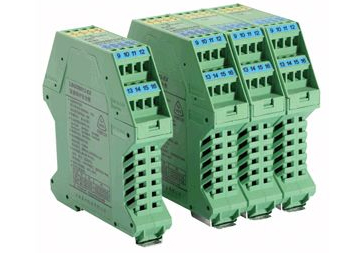Pepperl+Fuchs Surge Protector The guardian of the power industry
Pepperl+Fuchs Surge Protector The guardian of the power industry
A friend asked: What is the difference between a zinc oxide arrester and a surge protector. What is the role of P+F Pepperl+Fuchs surge protector? Answer: The zinc oxide arrester uses zinc oxide's good non-linear volt-ampere characteristics to make the current flowing through the arrester extremely small (microamp or milliampere level) at normal operating voltage; when overvoltage is applied, the resistance drops sharply and discharges The energy of overvoltage achieves the effect of protection. This kind of arrester has no discharge gap, and uses the non-linear characteristics of zinc oxide to discharge and break.

P+F Pepperl+Fuchs Surge Protector
Surge protector, also called lightning protector, is an electronic device that provides safety protection for various electronic equipment, instruments, and communication lines. When a spike current or voltage is suddenly generated in the electrical circuit or communication circuit due to external interference, the surge protector can conduct and shunt in a very short time, so as to prevent the surge from damaging other equipment in the circuit. The basic components of a surge protector are: discharge gap, gas-filled discharge tube, varistor, suppression diode, choke coil, etc. P+F Pepperl+Fuchs surge protector. Surge protectors are generally used in chemical, electric power and other industries. For example, in the power industry, for low-voltage power supply systems, transient overvoltage (TVS) protection caused by surges is best done by means of hierarchical protection. From the entrance of the power supply system (such as the main power distribution room of a building), the surge energy is gradually absorbed, and the transient overvoltage is suppressed in stages. For some particularly important or particularly sensitive electronic equipment, a third level of protection is necessary. At the same time, it can also protect the electrical equipment from the transient overvoltage generated inside the system.





